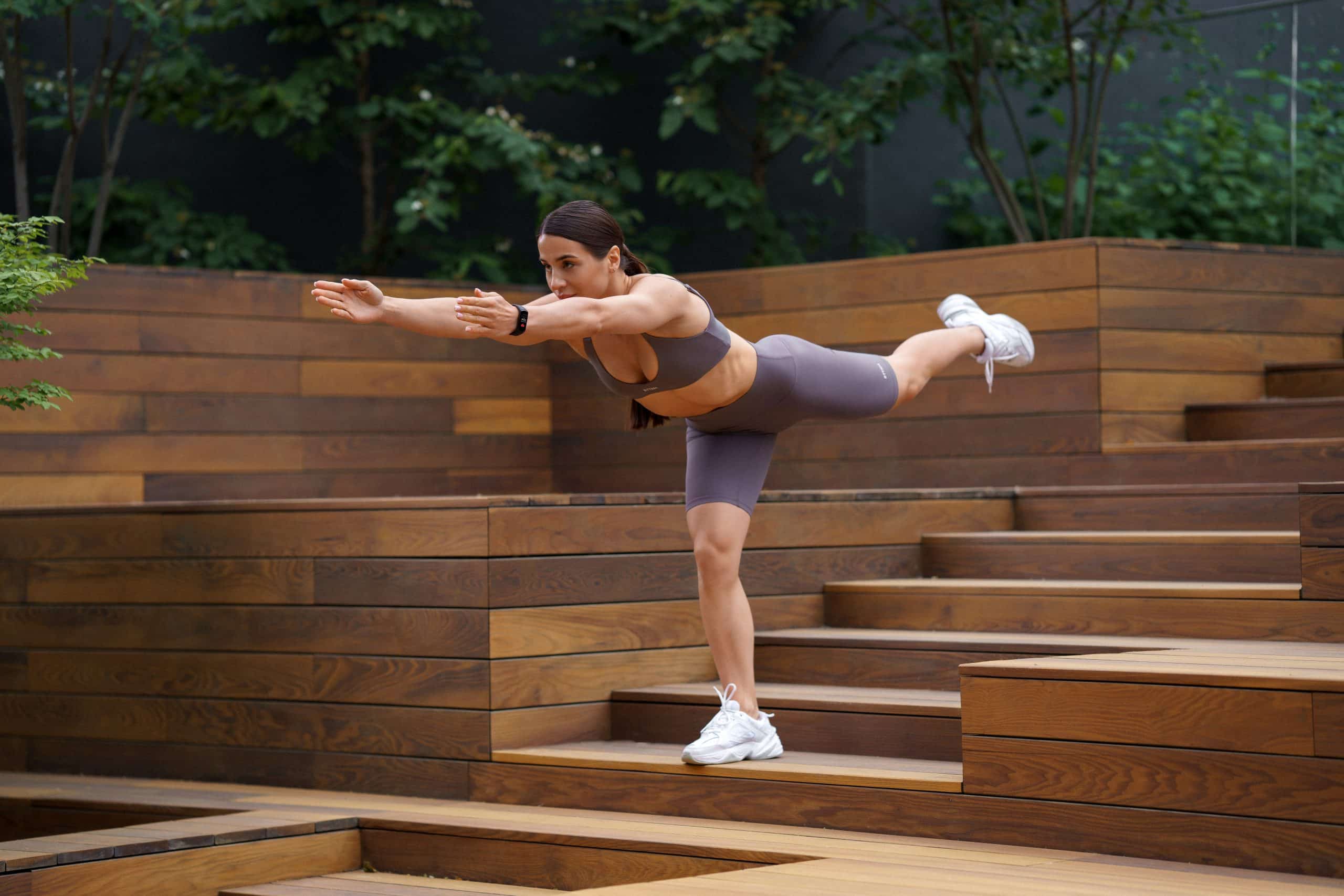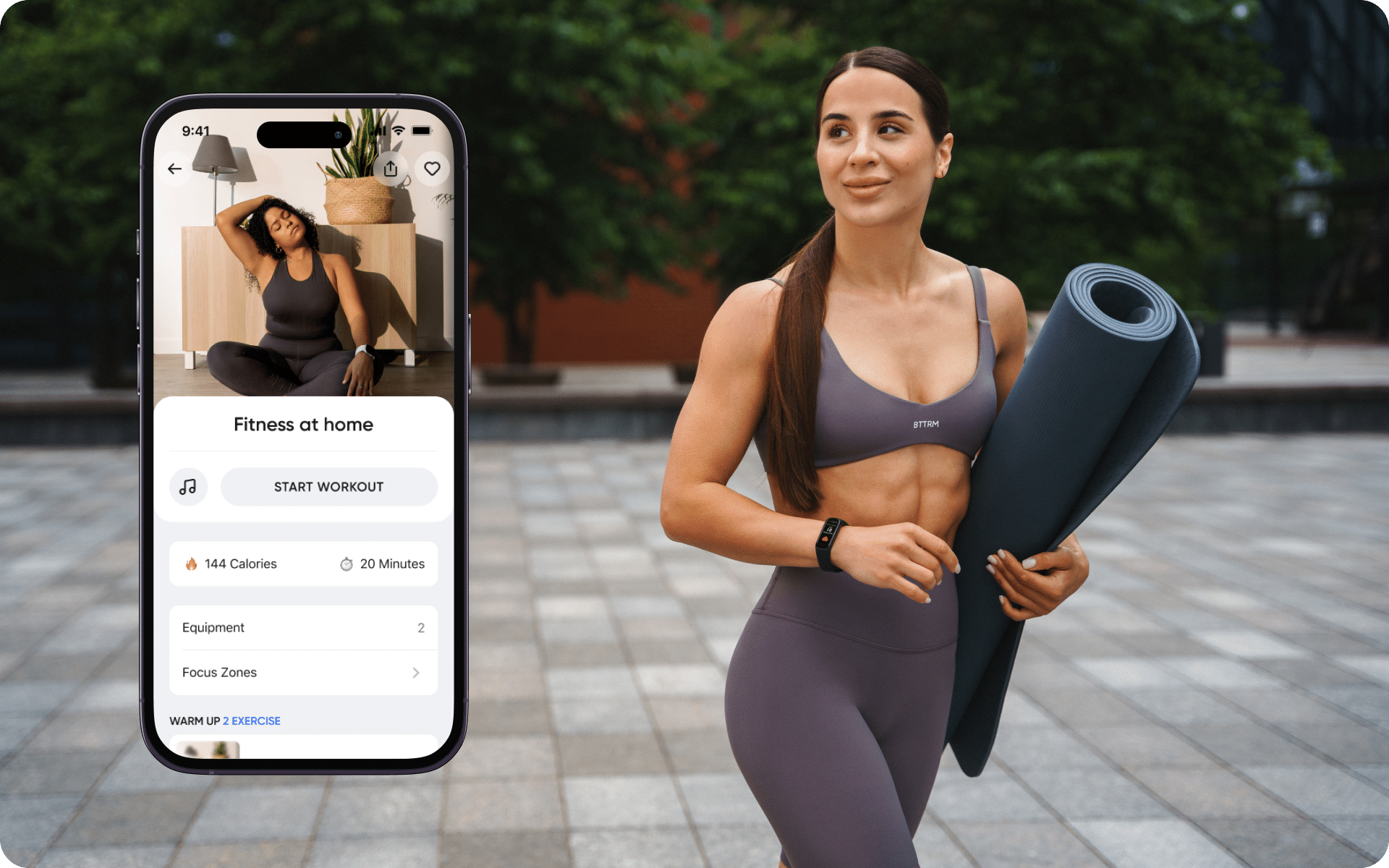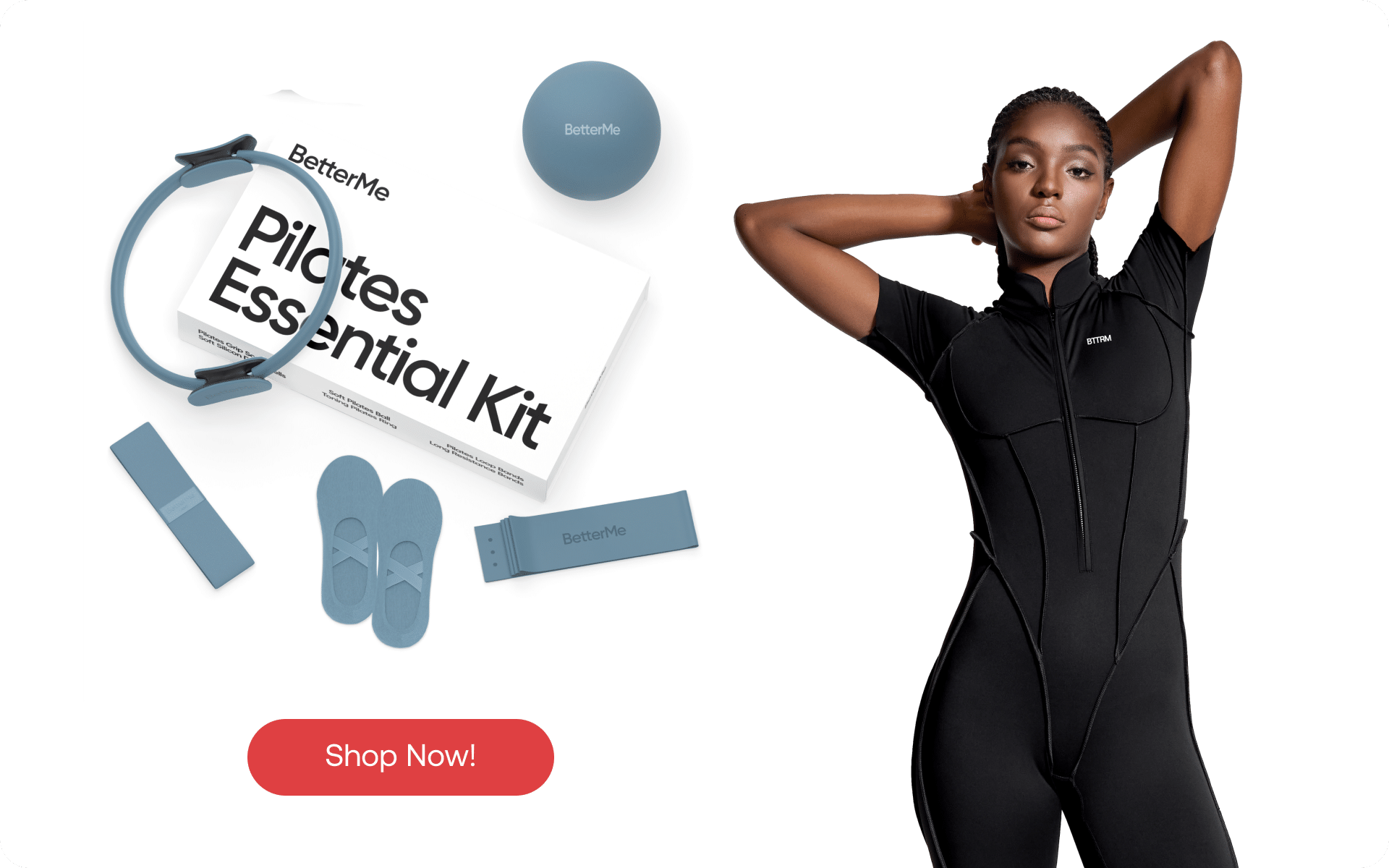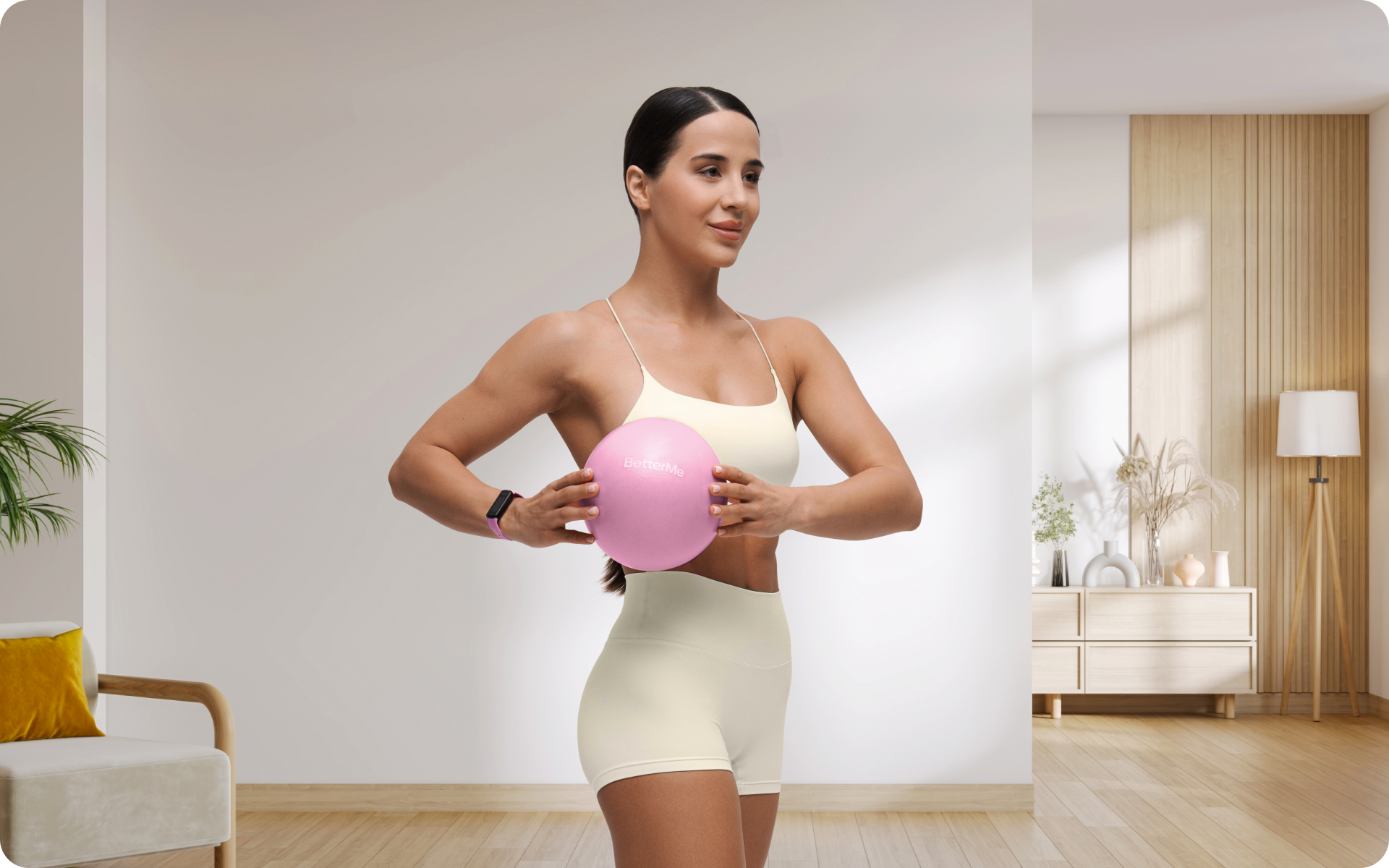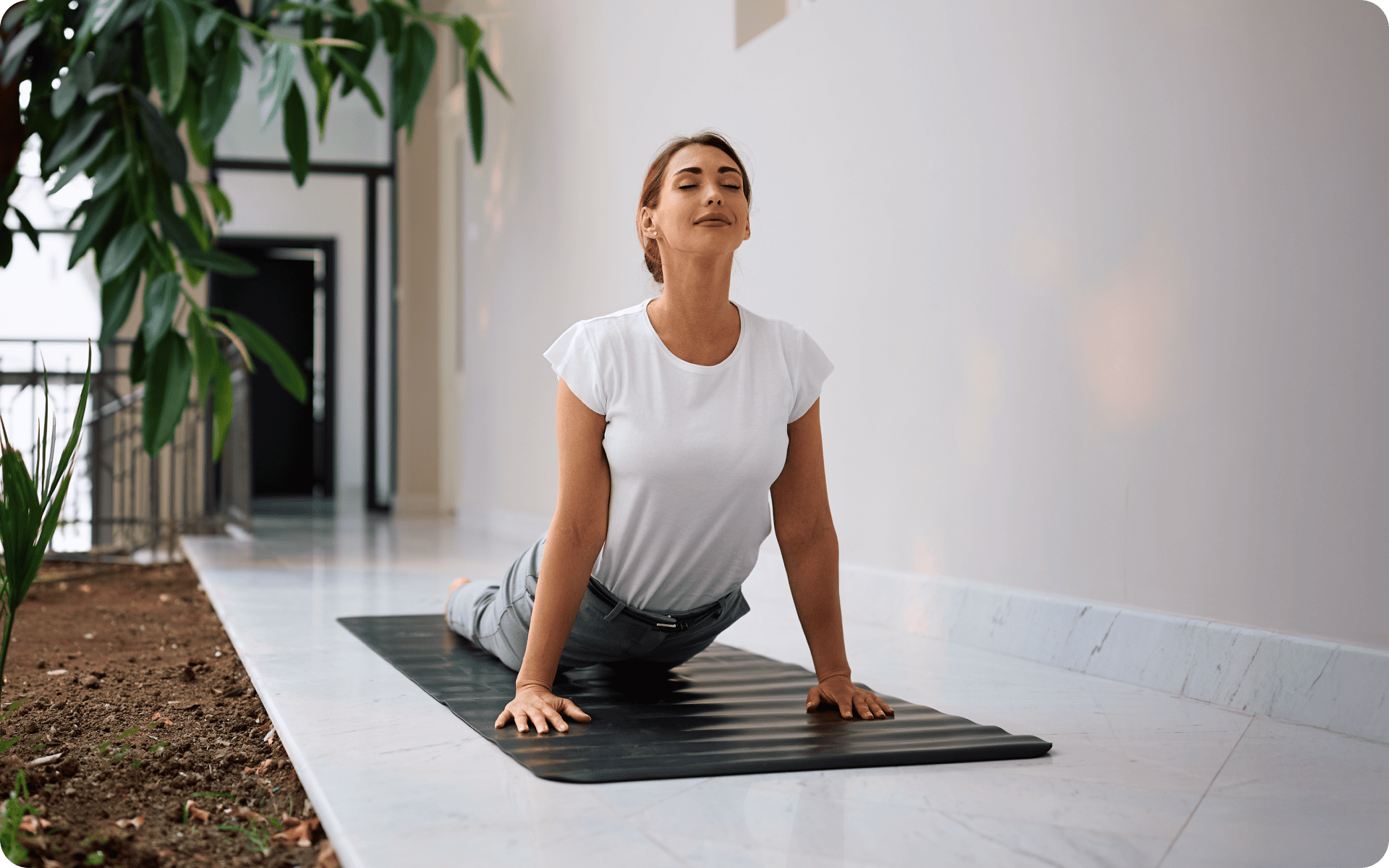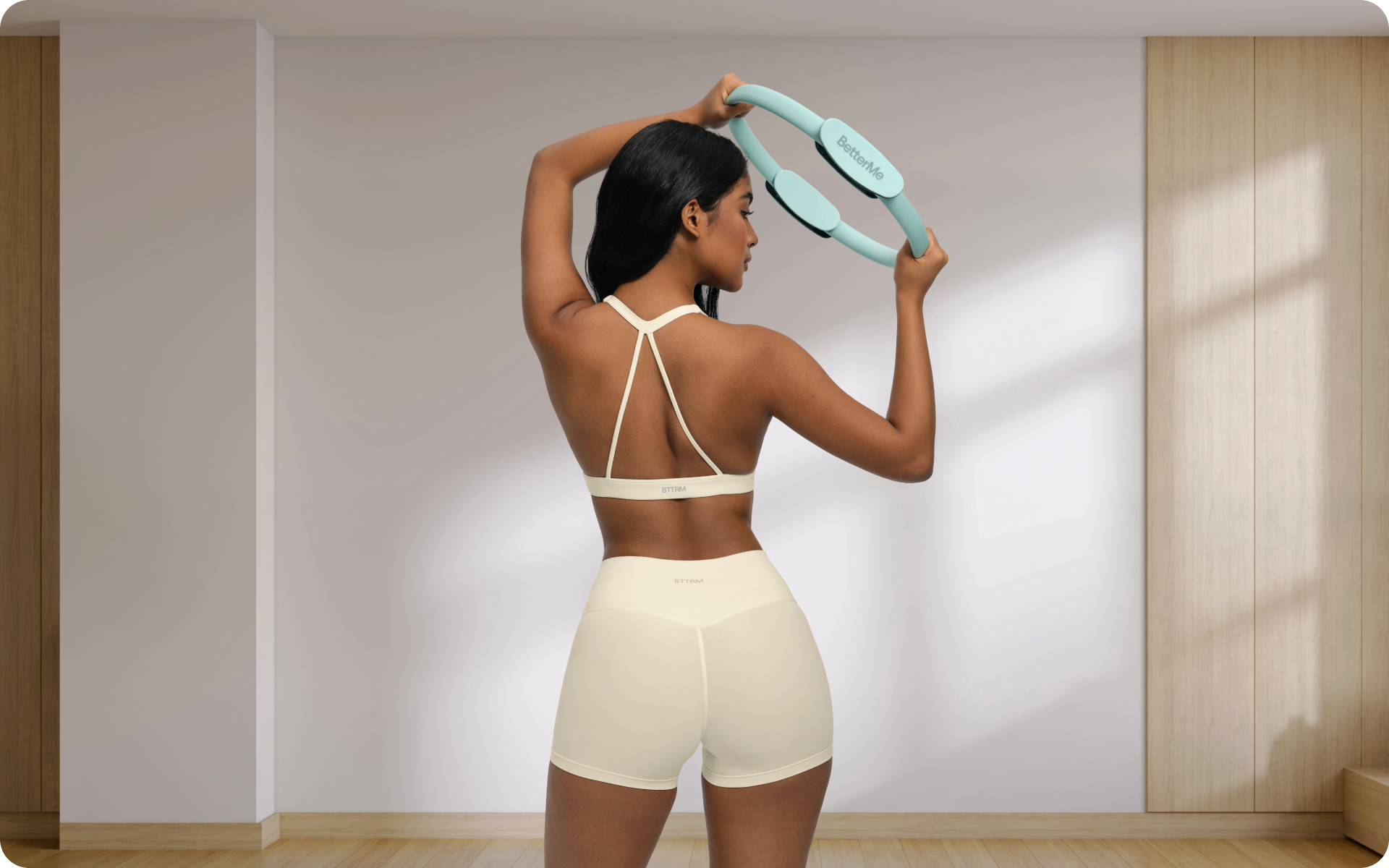John Pilates introduced pilates, the art of controlled movement, which he referred to as ‘Contrology’. The workout aimed to improve flexibility, develop control, and build on strength and endurance. His core principles of pilates, namely breathing, centering, concentration, control, flow, posture alignment, precision, relaxation, and stamina, laid the foundation and benefits for the practice. Follow us into the discussion as we delve deeper into every one of its benefits.
Health Benefits Of Pilates
The primary benefits of pilates are improved balance, flexibility, and core strength. From there stem the other health benefits.
1. Develops Core Muscle Strength
Pilates movement mainly targets the core muscles, including the deep muscles of the lower back, abdomen, and pelvic floor (hips and buttocks). Pilates workouts require regular movement patterns working around the core, strengthening, and building endurance in the muscles.
Because these muscles support the back, such movements will also build the body’s frame, including the neck and shoulders, decrease hip and back pain, and reduce pelvic floor discomfort or dysfunction.
Several studies support that pilates work as a powerhouse to improve and increase core strength and function (9). Another study also showed that pilates helped to improve abdominal strength and upper back support (22).
Read More: Side Plank Hip Lifts To Activate Your Obliques And Boost Your Core Strength

2. Improves Posture
From upper and lower back support, pilates helps to align the spine, which results in a good posture. It focuses on a full range of motions from the joints and muscles. Studies showed that these ranges of movement bring awareness to your alignment and strengthens neglected postural muscles (26).
Moreover, as pilates started to gain popularity, John Pilates introduced apparatus to be used alongside mat work to help achieve fitness goals. Among the apparatus introduced were the reformer and the spine corrected, which help to accelerate body alignment and body posture.
3. Decreases Back Pain
Pilates targets the pelvic floor muscles, which support both the upper and lower back. As the muscles contract and release, they gain strength, supporting the pelvic floor and the spine at large, including the back, neck, and shoulders.
With the stabilization of the back and relaxation of pectoral muscles, pilates can help to decrease back pain (26).
4. Increases Energy Levels
Pilates is a low-energy, low-impact exercise that rarely makes you feel burned out or disoriented after your workout. Besides that, it focuses on cardiorespiratory capabilities, which improve blood circulation and oxygen flow.
As the blood pumps, your blood glucose increases, which boosts the release of endorphins (feel-good hormones) and boosts energy in the body (17).
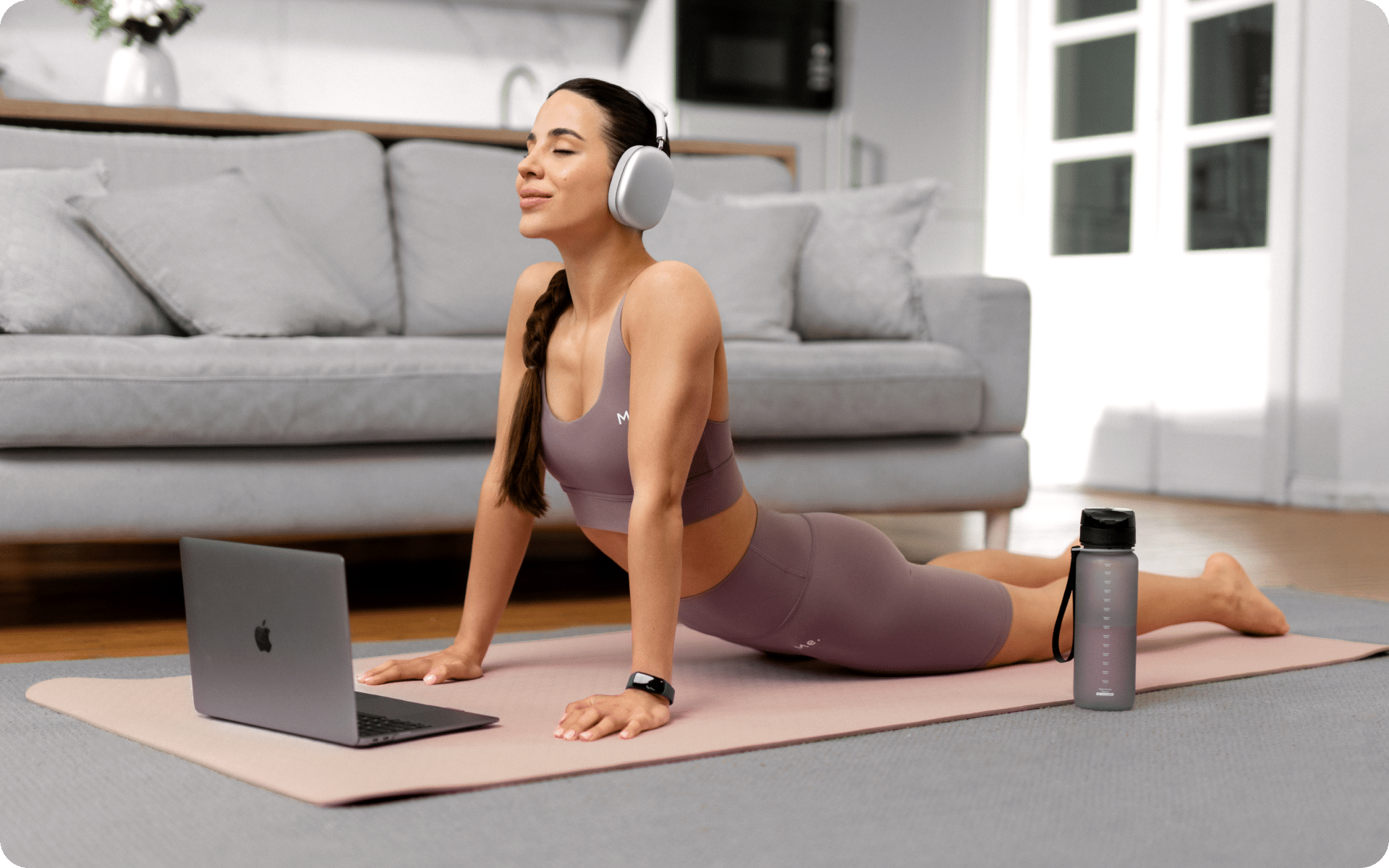
5. Increases Body Awareness
When Pilates introduced pilates back in the 20th century, the practice aimed to strengthen the mind and body. The system of exercises in pilates enhances body awareness and proprioception, which allows you to focus on your inward sensations/intuitions (14).
As the body becomes more aware of its sensations, you will be intuitive about your needs, emotions, and response to stimuli. Such stimuli can further help you avoid unnecessary injuries, encourage mindful eating, and bring coordination between your body, mind, and spirit.
Still building on the nine principles of pilates, it can also positively affect your nervous system by:
- Decreasing stress. Through breathing, control, and concentration, pilates can help you regulate your nervous system and manage stress.
- Pilates can improve cognitive functioning. Studies reveal that pilates training can help develop new neurons, increase neurotransmitters, increase blood flow to the brain, and increase the longevity of neurons responsible for memory, thinking, and learning (12).
- Improving sleep. A lot of factors can affect your sleep, but studies show that pilates can help to improve your sleeping habits if you include them in your weekly routine at least two to three times a week (24).
6. Helps Maintain Weight
Pilates doesn’t guarantee weight loss or stability. However, it can help build and strengthen muscle mass, which will help with weight loss and management. A study in obese women revealed that pilates could help with weight loss and BMI reduction, but do the workout regularly combined with a healthy diet and other lifestyle changes.
With pilates, the aim should be to gain balance and stability rather than weight loss. From inception, John pilates intended Contrology to be a form of therapy rather than exercise, which is why it’s a low-impact exercise and won’t burn much of your calories. In fact, you burn approximately three calories a minute with pilates (2).
Three calories a minute can affect weight loss as standards dictate you have to burn about 3500 calories to lose at least one pound. Therefore, pilates shouldn’t be used as a weight-loss method.
Lean and toned up body isn’t just a far-fetched fantasy. Check out the BetterMe app and watch it propel your weight loss journey into high gear!
Benefits Of Pilates For Men
According to WebMD, among the top six health concerns for men are heart health and mental health. Pilates can help men to build on their body strength and stabilize their mental health.
7. Balances Muscular Strength and Control
You’ve already learned about core strength. The same logic applies here. Pilates will help to enhance muscle control and strength in your back, limbs, and the sides of your body. With every movement, you build on stamina and improve physical coordination and balance (7).
8. Protects Mental Health
Among the nine principles of pilates, one of them is relaxation, which speaks about improving mental strength and enhancing concentration patterns. From a study, evidence revealed that pilates could improve mental health though not as effective as other empirically supported therapies (25).
9. Improves Sex Life
There’s no direct scientific correlation between pilates and sex hormones; however, pilates improves pelvic floor strength and function, which can help improve the sexual experience (1).
Other indirect ways pilates can help boost sex life include:
- A more toned and flexible body
- An improved stamina
- Intensified concentration
- Increased blood flow
Benefits Of Pilates For Women
The primary benefit of pilates for women involves the reproductive system.
10. Reduces Menstrual Pain
Because pilates targets the abdominal muscles, the exercise can help alleviate menstrual pain ranging from low to high levels of pain (Dysmenorrhea). Research proves that pilates movement can reduce menstrual pain significantly (4).
11. Supports Abdominal Muscles
Again, pilates can help create strong abdominal muscles that help with postmenopausal and post-delivery pains. During pilates posterior lateral breathing, you engage your deep abdominal and pelvic floor muscles using eccentric contraction, which will elongate your muscles while under pressure (5).
As the muscles elongate, they strengthen and build on endurance which helps alleviate pain and enhance recovery of the abdominal muscles.
A study found that pilates was effective in strengthening the lower body of postmenopausal women (7). Another study also revealed that pilates mat workouts helped to increase core strength in post delivered women, improve their cardiorespiratory fitness, and caused a decrease in their girth measurements (9).
12. Reduces Maternal Fatigue
A study on pilates as a home exercise revealed that it’s an effective method for reducing postpartum fatigue and could even alleviate the risks of postpartum depression. Therefore, it’s proven to be an effective intervention in promoting the health of mothers of newly born babies (8).
Read More: How To Lose Weight While Breastfeeding: Getting On Track To Your Pre-Pregnancy Weight
Benefits Of Pilates For Runners
Running entails constant movement of the body, which is similar to pilates. Below we look at six benefits of pilates for runners.
13. Increases Flexibility
The essential benefit of pilates is that it helps to increase the passive stretch in your body. It can increase the length and stretch of your muscles and joints by expanding them, hence increasing your flexibility. Through active movements and dynamic stretches, muscles can become longer and leaner, leading to improved overall flexibility (5).
14. Optimizes Mobility
Because of increased flexibility, you’re also gaining optimized mobility, which means a range of motion at the joints. For optimum mobility, you need strength and flexibility, which pilates offers. Pilates ensures that your body moves in smooth transitions between slow controlled movements with every practice, which stretches and strengthens the body, hence enhancing your mobility (3).
Runners can greatly benefit from pilates as it improves hip mobility and prevents tight hip flexors, which inhibit stride length.
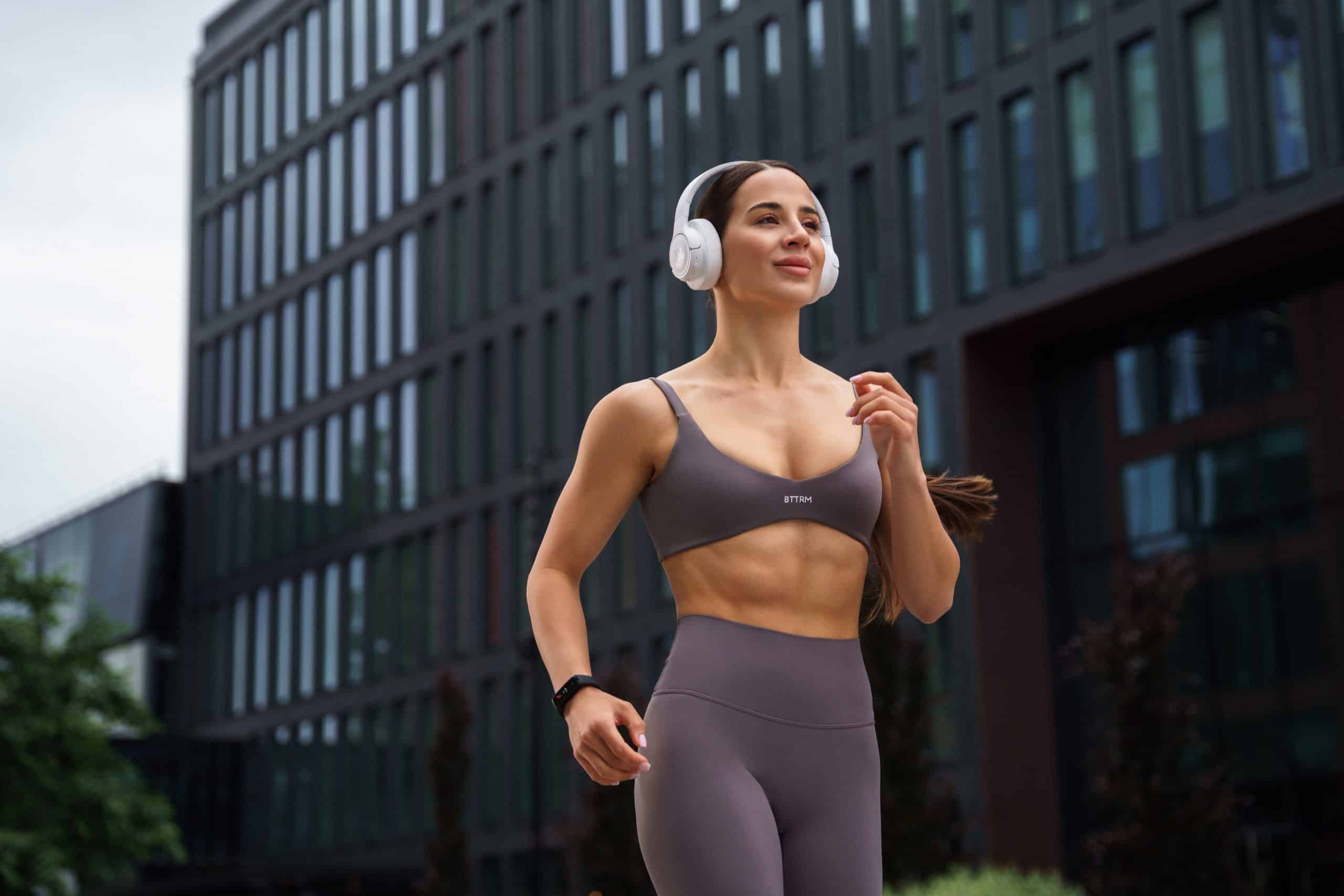
15. Prevents Musculoskeletal Injuries
Pilates can help with injury rehabilitation and management by working on the right muscle engagement that builds balance and reduces the risk of injury. It works on the muscles using dynamic exercises which balance the body muscles.
Building such muscle strength will ensure the body isn’t weak, loose, tight, or rigid, making the body susceptible to injury. Instead, with practice, pilates supports and stabilizes your joints which then reduces the risk of sports injuries.
Pilates, too, can help with muscle recovery. Because the workout is low impact, the body doesn’t undergo too much muscle tearing; instead, it lengthens the joint and rehabilitates the joints and muscles to avoid adding more stress or strain on it.
Again, because running is a continuous sport, such regular movements will promote blood flow in the boys which can alleviate muscle soreness and tightening that occurs after long training or running sessions.
16. Enhances Sports Performance
Pilates elevates sports performance for all athletes. First off, it balances the body by working on every muscle group in the body. Mobilizing all these muscles will ensure peak performance of every muscle.
Additionally, pilates can improve your kinaesthetic awareness of running. Kinaesthetia/ movement sense is an essential part of pilates as it will keep you aware of your body movements and positions. Using kinaesthetic awareness, runners can use this learning method to target muscles in the body that can help improve running gait and running efficiency.
Lastly, research showed that pilates could help athletes in various sports to improve in several ways, including stability of the core, flexibility, and vertical jumps (18).
17. Strengthens Bones
Exercise, in general, aids with bone strengthening. However, studies show that pilates can increase bone density and relieve pain in your bones (23). Moreover, strength training using pilates workouts can prevent osteoporosis and osteoarthritis for people of all ages.
18. Improves Breathing Control
Lastly, pilates can help with breathing control. During training, pilates practice full inhalation and exhalation practices where you breathe deeply into the back and sides of your ribcage and exhale out with effort as you squeeze out air from the lungs. Such a posterior lateral breathing technique, along with focus, can invest your lung capacity and circulation (16).
Pilates emphasizes synchronized breathing to promote diaphragmatic expansion, which allows for better oxygen flow and breathing control. The more air flows through your bloodstream, the more you will be able to ensure; hence, slowing the onset of fatigue.
Looking for a way to break the vicious cycle of weight loss and tone up all the jiggly parts? Watch the extra pounds fly off and your muscles firm up with the BetterMe app!
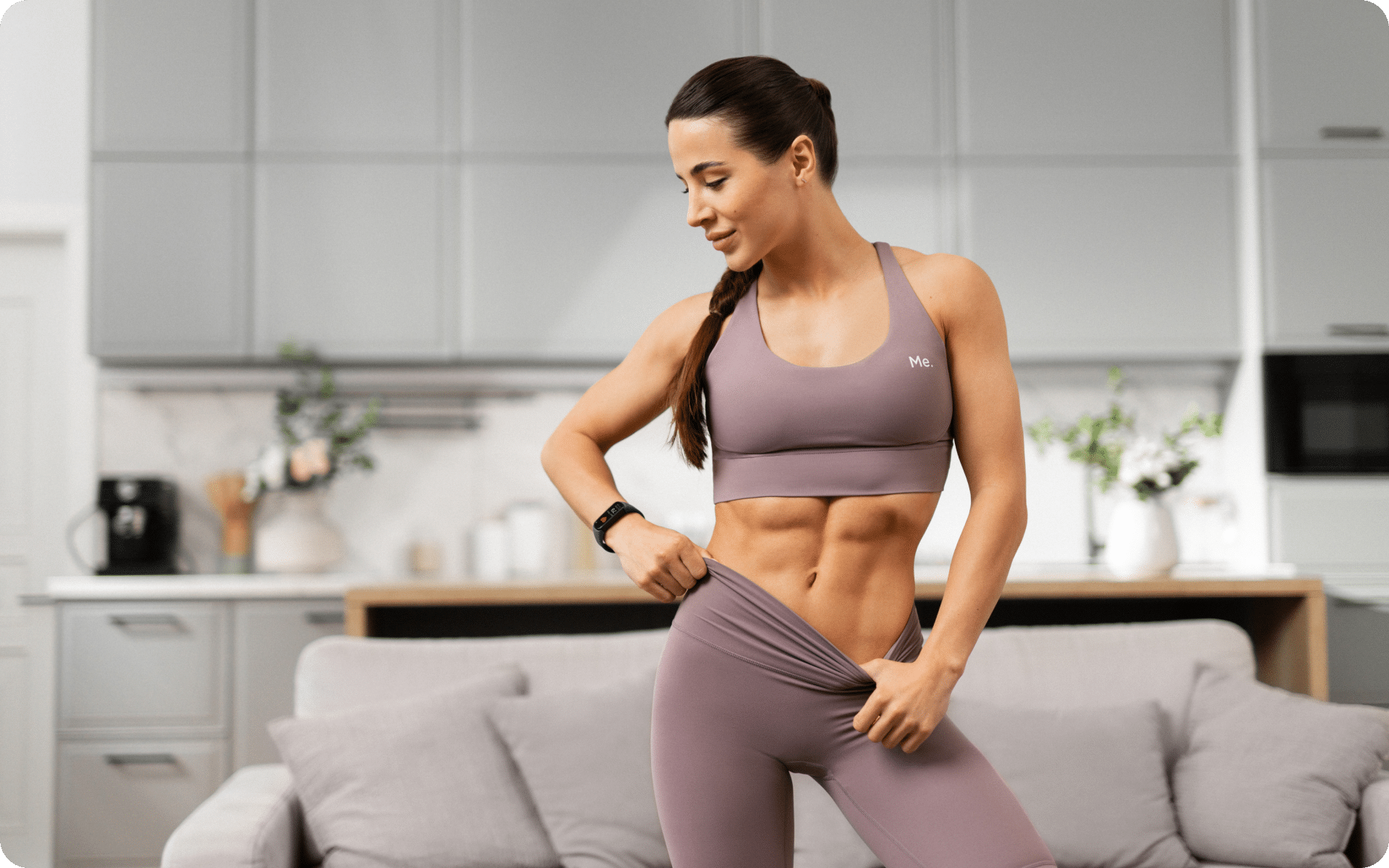
Benefits Of Pilates Vs. Yoga
From what you’ve read above, you know that pilates focuses on balancing the mind and body, but more specifically, core strength among the major muscle groups in the body. As for yoga, it equally focuses on the mind and body, but its main elements are flexibility and meditation.
Yoga utilizes body postures (asanas) to develop body strength and flexibility while calming the nerves. Through breathing and asanas, yoga can affect every part of your body, including the muscles, nerves, bones, brain, joints, and other internal organs.
Both exercise systems improve musculoskeletal movements by indulging in a range of movements, increasing flexibility, mobility, strength, and endurance.
Moreover, they work on the nervous system to improve blood circulation, relieve muscle tension, and focus on breathing which soothes the nervous system. Both their long-term benefits are similar as they help reduce stress, fatigue and increase focus and body awareness.
However, yoga has other benefits which don’t apply to pilates. They include:
- Improve the body’s cardiovascular system. Through asanas, yoga can help to improve cardiovascular fitness by holding onto muscle tension. In turn, this will normalize blood pressure and improve blood circulation (8).
- Improves digestion. Yoga has a soothing effect on the body muscles, which can help to speed up sluggish digestion (13).
The Bottom Line
From the 18 benefits above, we can conclude that pilates can aid in a myriad of ways to build your body physically and mentally, from flexibility, core strength, balance, body awareness, and mental health. In comparison to yoga, both disciplines work to balance the mind and body; however, yoga focuses on flexibility while pilates focuses on core strength.
Check out the 20 Minute Full Body Workout at Home below.
DISCLAIMER:
This article is intended for general informational purposes only and does not serve to address individual circumstances. It is not a substitute for professional advice or help and should not be relied on for making any kind of decision-making. Any action taken as a direct or indirect result of the information in this article is entirely at your own risk and is your sole responsibility.
BetterMe, its content staff, and its medical advisors accept no responsibility for inaccuracies, errors, misstatements, inconsistencies, or omissions and specifically disclaim any liability, loss or risk, personal, professional or otherwise, which may be incurred as a consequence, directly or indirectly, of the use and/or application of any content.
You should always seek the advice of your physician or other qualified health provider with any questions you may have regarding a medical condition or your specific situation. Never disregard professional medical advice or delay seeking it because of BetterMe content. If you suspect or think you may have a medical emergency, call your doctor.
SOURCES:
- A strong pelvic floor is associated with higher rates of sexual activity in women with pelvic floor disorders (2015, ncbi.nlm.nih.gov)
- Can Pilates do it all (2006, acefitness.org)
- Comparison between static stretching and the Pilates method on the flexibility of older women (2016, pubmed.nih.gov)
- Effectiveness of Pilates over Conventional Physiotherapeutic Treatment in Females with Primary Dysmenorrhea (n.d., iosrjournals.org)
- Effect of a physical training program using the Pilates method on flexibility in elderly subjects (2015, pubmed.nih.gov)
- Effect of Pilates exercises in risk factors for cardiometabolic diseases: A systematic review (2015, researchgate.net)
- Effects of a Pilates exercise program on muscle strength, postural control and body composition (2015, pubmed.nih.gov)
- Effects of Pilates exercise on postpartum maternal fatigue (2015, ncbi.nlm.nih.gov)
- Effects of Pilates on core muscle strength and endurance in post six months delivered women (2020, researchgate.net)
- Effects of Pilates on muscle strength, postural balance, and quality of life of older adults (2015, ncbi.nlm.nih.gov)
- Effects of pilates on patients with chronic non-specific low back pain: a systematic review (2016, pubmed.nih.gov)
- Improvements in cognition, quality of life, and physical performance with clinical Pilates (2015, ncbi.nlm.nih.gov)
- Irritable Bowel Syndrome: Yoga as Remedial Therapy (2015, ncbi.nlm.nih.gov)
- Pilates and Proprioceptive Neuromuscular Facilitation Methods Induce Similar Strength Gains but Different Neuromuscular Adaptations in Elderly Women (2017, pubmed.nih.gov)
- Pilates for improvement of muscle endurance, flexibility, balance, and posture (2010, pubmed.nih.gov)
- Pilates Method for Lung Function and Functional Capacity in Obese Adults (2015, pubmed.nih.gov)
- Pilates Method Improves Cardiorespiratory Fitness: A Systematic Review and Meta-Analysis (2019, mdpi.com)
- Pilates training improves 5-km run performance by changing metabolic cost and muscle activity in trained runners (journals.plos.org)
- Positive effect of yoga on cardiorespiratory fitness (2015, ncbi.nlm.nih.gov)
- Principles of Sports Rehabilitation (2008, sciencedirect.com)
- Recommendations for hamstring injury prevention in elite football: translating research into practice (2019, pubmed.nih.gov)
- The effects of a Pilates training program on arm-trunk posture and movement (2010, pubmed.nih.gov)
- The effects of clinical pilates exercises on bone mineral density, physical performance, and quality of life of women with postmenopausal osteoporosis (2015, pubmed.nih.gov)
- The effects of Pilates exercise on sleep quality in postpartum women (2014, pubmed.nih.gov)
- The Effects of Pilates on Mental Health Outcomes: A Meta-Analysis of Controlled Trials (2018, researchgate.net)
- The impact of pilates exercises on the postural alignment of healthy adults (2016, researchgate.net)
